El deporte mundial entre nacionalización, privatización y autodestrucción
Helmut Digel (Inside the Games)
En el mundo del deporte internacional se están produciendo desde hace tiempo, y especialmente en estos días, cambios dramáticos que han repercutido en su rendimiento, sus efectos y su alcance.
Es muy difícil evaluar este proceso incluso para los expertos.
En mi opinión, cuatro de estos cambios son particularmente trascendentales y requieren un análisis y una observación más detenidos:
1. Especialmente en las últimas semanas, se ha hecho evidente que el mapa del deporte mundial y los centros de poder que identifica han cambiado considerablemente.
En el pasado, en el deporte profesional de alto rendimiento sólo existían dos centros de poder: Estados Unidos y Europa, pero desde hace algún tiempo se ha añadido otro centro de poder: China, Corea y Japón.
En las últimas dos décadas, el mapa mundial del deporte y, por tanto, también su geopolítica ha vuelto a cambiar radicalmente, ya que todo el mundo árabe, pero sobre todo los Estados del Golfo de la Península Arábiga, es decir, Arabia Saudita, Qatar, Emiratos Árabes Unidos, Bahréin, Omán y Kuwait han formado otro centro de poder que, con todos sus recursos financieros y económicos a su disposición, una vez más ha cambiado radicalmente y seguirá cambiando la situación existente entre las poderosas naciones deportivas ya existentes.
2. Cuando se trata de cambiar las estructuras de poder, se pueden identificar dos procesos que a primera vista parecen opuestos y que pueden ser igualmente peligrosos para las condiciones estructurales existentes en el deporte internacional de alto rendimiento. Por un lado, hay una creciente privatización de los deportes de alto rendimiento.
Cada vez más clubes deportivos pasan a ser de propiedad privada, inversores privados compran estructuras deportivas existentes e incluso se privatizan centros de entrenamiento y estructuras de competición.
El fabricante de bebidas austriaco Red Bull o una empresa farmacéutica suiza con su centro deportivo de alto rendimiento OYM son sólo dos ejemplos entre muchos. Por otro lado, hay un creciente proceso de nacionalización, en el que algunos estados están haciendo uso de estructuras organizativas del sector privado para cambiar seriamente el equilibrio de poder en el deporte mundial a su favor.
Esto se aplica sobre todo a la apropiación políticamente controlada de algunos Estados árabes, pero también en parte por parte de Estados de la antigua Unión Soviética y de Estados asiáticos de determinadas empresas deportivas privadas.
Las llamadas organizaciones no gubernamentales (ONG), es decir, las asociaciones voluntarias que esencialmente han apoyado el deporte mundial durante más de 100 años, se quedan en el camino.
Cada vez más clubes deportivos pasan a ser propiedad privada de empresas como Red Bull ©Getty Images
Cada vez más clubes deportivos pasan a ser propiedad privada de empresas como Red Bull ©Getty Images
3. Los dos procesos de cambio aquí mencionados van de la mano de un cuestionamiento de todas las máximas éticas y morales existentes en el deporte olímpico, cuyos efectos difícilmente pueden pasarse por alto.
Al mismo tiempo, los límites de lo que está permitido y lo que debe prohibirse se desplazan constantemente en favor de lo que es factible.
Se aplica la máxima general "todo lo que no está prohibido está permitido". El deporte se ha convertido en un campo de experimentación de las ciencias naturales. La "mejora" está a la orden del día.
Las reglas del juego limpio han quedado así obsoletas y el deporte y el deportista de alto rendimiento estarán sujetos al "objeto KI", aunque el resultado de este experimento está completamente abierto.
4. Desde hace algún tiempo se observa que todos aquellos países que, desde su punto de vista, se encuentran en desventaja en el desarrollo del deporte internacional desde hace más de un siglo, exigen con razón que el deporte mundial -que funciona como un deporte de alto nivel- deporte de alto rendimiento - puede y debe tener lugar en cualquier momento y en cualquier lugar de la Tierra.
Estados Unidos y Europa han tratado de limitar la celebración de grandes eventos deportivos internacionales a los continentes norteamericano y europeo.
Han recibido un apoyo sostenido de los medios de comunicación que ustedes mismos dominaban, pero esto ha sido y es condenado con razón por muchas naciones de otros continentes como "neocolonialismo" y "racismo".
Por lo tanto, la idea de que las cuatro estaciones que existen en el norte de Europa y en los EE.UU. definen el calendario de los eventos deportivos internacionales se está convirtiendo cada vez más claramente en una cosa del pasado.
Lo mismo se aplica a la suposición de que los eventos deportivos internacionales siempre deben alinearse con los deseos europeos de entretenimiento en la hora central europea (CET).
Un Mundial puede celebrarse hoy y en el futuro en un país como Qatar con un paisaje desértico y con temperaturas medias diarias superiores a los 30°.
En el futuro, sin embargo, también podría celebrarse en el mismo país un Campeonato Mundial de Esquí, donde las competiciones se disputarán sobre nieve artificial en un parque invernal artificial cubierto y climatizado.
Europa debe aprender que cuando es invierno en la mitad norte del mundo, la mitad sur del mundo está en los meses de verano.
Así como antes se esperaba que los atletas de Nueva Zelanda, Australia y el Caribe compitieran en las pistas cubiertas del atletismo europeo, aunque en sus propios países sea verano, ahora se espera que Europa lo haga: que sus atletas también participen en competiciones durante todo el año, independientemente de las condiciones climáticas en las que se desarrollen.
Desde el punto de vista ecológico, esta evolución es más que alarmante. Sin embargo, en vista de la codicia por el dinero que domina a todo el deporte mundial desde hace mucho tiempo, las preocupaciones medioambientales pasan a un segundo plano o ni siquiera se tienen en cuenta.
El deporte mundial -este es otro aspecto peligroso de su creciente globalización- aumenta su "huella" de CO2 casi todos los años.
El volumen de tráfico crece sin cesar y el número total de participantes en eventos multideportivos internacionales que viajan a estos eventos en avión o en transporte privado ha aumentado enormemente.
Sólo en 2022, ha habido más de 850.000 eventos deportivos en los que las apuestas han sido legales e ilegales. Contra toda lógica y señales de alerta climáticas, constantemente se añaden nuevos eventos deportivos internacionales.
"Consideración mutua" o incluso "abstinencia" son palabras extranjeras desconocidas. Las emisiones de CO2 provocadas por los espectadores que circulan por las calles de Francia y de toda Europa, acompañados por el séquito de los organizadores y que informan sobre el Tour de Francia y los medios de comunicación, pueden mostrar de forma ejemplar hasta qué punto estos acontecimientos de gran escala son cuestionables contra el telón de fondo del cambio climático, que es lamentado por todas partes.
Además, cada uno de estos grandes eventos deportivos, que suelen durar varias semanas, requiere una enorme preparación y seguimiento, lo que también requiere una cantidad considerable de vuelo.
En mi opinión, el deporte mundial con sus efectos perjudiciales para el clima debería haber sido ridiculizado públicamente desde hace mucho tiempo y debería prohibirse cualquier crecimiento futuro, es decir, cualquier evento nuevo.
Sin embargo, dada su codicia por el dinero, parece muy cuestionable si los responsables de las organizaciones deportivas mundiales están aprendiendo que "menos también puede ser más" ante la crisis climática.
La extraña y simultánea mezcla entre nacionalización y "pseudoprivatización" que se observa estos días, promovida sobre todo por los Estados del Golfo, me parece especialmente influyente y peligrosa.
La toma estatal del deporte mundial está camuflada por empresas y fondos upstream y empresas pseudoprivadas, en las que, sin embargo, la "familia real" de Arabia Saudita o la "familia emir" gobernante del emirato respectivo tienen la "voz".
Qatar fue el primer país del Golfo Pérsico que logró abrirse camino en el deporte mundial. Invirtió en tenis, Fórmula 1, en la Federación Internacional de Balonmano, atletismo, Juegos Asiáticos y Campeonatos del Mundo en casi todos los deportes olímpicos. En 2014 comenzó con el Campeonato Mundial de natación, seguido de boxeo y balonmano en 2015, ciclismo en 2016 y gimnasia artística y atletismo en 2018 y 2019. El punto culminante fue la Copa Mundial de la FIFA 2022. Este fue el mayor éxito de Qatar en el deporte mundial, ya que este país ahora participa en casi todos los deportes más importantes del mundo.
Casi todos los estados árabes siguieron este camino y por eso hoy el Tour de Francia está dominado por dos equipos de la región del Golfo y la serie de deportes cuyos responsables deportivos han puesto a la venta sus competiciones a los gobernantes de los estados del Golfo es cada vez más larga. .
Lo que más llama la atención estos días es el papel de Arabia Saudita, que actualmente está superando a su otrora vilipendiado vecino Qatar con un programa de recuperación único y haciendo alarde deliberadamente de su pretensión de tener un papel de liderazgo en el deporte mundial. Lo hacen incluso en regiones del mundo que no están nada contentas con ello.
Además, Arabia Saudita ahora incluso coopera con sus antiguos archienemigos Irán y Qatar en cuestiones del deporte mundial. Karim Benzema y Cristiano Ronaldo juegan ahora en la liga de fútbol saudita y otras 20 "estrellas del fútbol mundial" también. Es una liga de legionarios en la que uno de cada cinco es brasileño.
Arabia Saudita ha creado su propio circuito de golf, el llamado LIV Golf. El nombre corresponde al número 54 en escritura romana y hace referencia a tres rondas de golf de 18 hoyos.
De esta manera, la empresa se diferenciaba del PGA Tour estadounidense, que ahora estaba integrado en su propia "cartera de derechos de licencia" y podía comprarse a los propietarios estadounidenses por un importe mayor.
Además de adquirir los derechos del Rallye Dakar, ahora organiza carreras de Fórmula 1 anualmente, albergará los primeros Juegos Asiáticos de Invierno en 2029 y fue el primero en albergar carreras de Fórmula E.
Ya en 2013 y 2019 se adquirió un club de fútbol español e inglés. Los árabes también albergarán su Supercopa en ambos países. Aston Martin, el equipo de carreras de Fórmula 1, es propiedad de Arabia Saudita, al igual que la lucha libre de la WWE.
ESL Gaming, líder mundial del mercado de deportes electrónicos, está controlado y financiado por Arabia Saudita. El estado desértico ha gastado mil millones de dólares en esta empresa. El vehículo es el "Savvy Gaming Group", una filial al 100 por ciento del fondo soberano Public Investment Fund (PIF). Este fondo está presidido por el Príncipe Heredero Mohammed bin Salman Al Saud.
Los Emiratos Árabes Unidos no son menos activos. Hasta la fecha han adquirido once clubes de fútbol en Inglaterra, Estados Unidos, Australia, Uruguay, Francia, India, Italia, China y Brasil. Para ello se creó un "Grupo de Fútbol de la Ciudad". También está previsto entrar en la liga estadounidense de baloncesto NBA, después de que abandonara su anterior política estratégica y señalara a los Estados del Golfo que podía adquirir acciones.
Dubai es la sede de la carrera de caballos más lucrativa del mundo y del campeonato mundial de carreras de caballos cada año. En el hipódromo de Meydan, que supera todo en arquitectura con sus numerosas instalaciones, parten los mejores caballos del mundo. Al mismo tiempo, todos los "traficantes de caballos" internacionales que tienen rango y nombre celebran su reunión anual más importante.
Todo esto es posible porque los órganos rectores de las principales organizaciones del deporte mundial están dominados por funcionarios impulsados por una excesiva codicia por el dinero y cuya competencia intelectual es totalmente inadecuada para reconocer los peligrosos acontecimientos que están afectando así a las estructuras existentes de todo el deporte. del deporte mundial. Y así, finalmente, cortaron la silla en la que ellos mismos se sientan con sus acciones irresponsables.
Los Estados del Golfo, especialmente Arabia Saudita, desempeñan en el ámbito del deporte el mismo papel que desempeñaron anteriormente en diversos sectores de la economía. Actúan como inversores "ricos en piedra" que son generosos y, a veces, incluso ayudan cuando otros medios se han agotado.
En el modelo económico deportivo, muy influido por Estados Unidos, era habitual que las inversiones en clubes deportivos se hicieran con el objetivo de obtener beneficios a través de ingresos anuales y patrocinios.
En el modelo deportivo árabe, la industria del deporte se desliga de todas las consecuencias financieras. No se trata de ganancias y pérdidas. En primer lugar, se trata de garantizar que los Estados del Golfo alcancen el lugar deseado en el importante mapa político de este mundo a través de inversiones deportivas.
El deporte se ha convertido", como señala acertadamente Felix Haselsteiner en su análisis económico en el SZ del 8 de julio de 2023, "en un vehículo de gran construcción".
Para Arabia Saudita, esto significa ser reconocida como una potencia mundial entre las principales potencias mundiales.
"Arabia Saudita está aboliendo deliberadamente la competición aquí, no sólo en términos económicos sino también en términos deportivos".
Esto se aplica igualmente a los salarios de la liga de fútbol saudí y de todas las demás ligas de los Estados del Golfo, así como a los premios en metálico y las bonificaciones pagadas en los distintos deportes. Así, incluso el último profesional de golf en un evento de LIV Golf recibe miles de dólares estadounidenses en premios.
Ninguna de las muchas organizaciones deportivas internacionales se ha pronunciado en contra de este desarrollo, ni siquiera ha intentado obstaculizarlo.
Ahora hay que comprender dolorosamente que todos aquellos que con avidez introdujeron el dinero en su deporte siempre han renunciado a su poder.
Fueron las grandes federaciones del deporte mundial, como la FIFA, la Federación Internacional de Balonmano (IHF), la World Athletics, la Unión Ciclista Internacional (UCI), etc., las que invitaron a los Estados del Golfo a comprar todo lo posible del mundo del deporte que estaba en auge. en venta.
Presumiblemente, no habrían podido excluir a los inversores sobre la base de las leyes existentes, pero al menos podrían haber frenado los procesos de desarrollo cada vez más rápidos protegiendo el núcleo de sus deportes a través de nuevas estructuras regulatorias.
Hoy, debido a los cambios que los Estados del Golfo han provocado en el mundo del deporte, es necesario hablar de una "historia del fin del deporte".
Pero el analista Haselsteiner también ve un pequeño rayo de esperanza: "Es puro fatalismo, pero la única manera de que el deporte vuelva a ser sólo deporte sería, posiblemente, la caída del sistema. Los clubes de fútbol no son grandes bancos y un deporte no es demasiado "Es grande para fracasar". No se rescatará a los clubes deportivos con miles de millones de dinero de los contribuyentes si algo sale mal en algún momento, lo que también significa que todavía hay esperanza."
Sin embargo, en relación con el declive ético y moral del deporte mundial mencionado anteriormente, parece apropiado tener menos esperanzas.
El proceso global de "totalización del deporte de alto rendimiento" avanza cada vez más rápido. El anuncio de que el año que viene se celebrarán los llamados "Juegos mejorados" es sólo un síntoma entre muchos.
Los tiempos y las velocidades obtenidas en el Tour de Francia y en algunas carreras ciclistas más indican que las intervenciones científicas, médicas, farmacéuticas y biomecánicas en los deportes de alto rendimiento, que las máximas de "más alto, más rápido, más lejos" son, al menos, ilimitadas. desde el punto de vista de la mayoría de los protagonistas del sistema social del "deporte de alto rendimiento".
Es poco probable que incluso tres trágicas muertes causadas por caídas en el ciclismo profesional en la última temporada cambien algo. Ha habido varias señales de advertencia similares en los últimos años. Pero los responsables de eventos deportivos tan importantes siempre pasaban inmediatamente a planificar el próximo gran evento, si podían estar seguros de que la breve rebelión mediática volvería a estancarse rápidamente.
Puedes estar seguro de que tu evento de entretenimiento deportivo, como "espectáculo" y "exceso", seguirá siendo visitado por espectadores en el futuro.
Pero si hubiera un consenso sobre los valores ética y moralmente deseables que deberían caracterizar al deporte de alto rendimiento, estos peligros al menos serían dominables y manejables.
Sin embargo, todas las partes interesadas (atletas, entrenadores, funcionarios deportivos, científicos, organizadores, patrocinadores, periodistas deportivos, políticos, etc.) están más lejos que nunca de este consenso.
Además de esto, para el tercer peligro descrito anteriormente, para un deporte de alto rendimiento que tiene que buscar su futuro bajo el inminente cambio climático, prácticamente no hay hallazgos reveladores sobre cómo el deporte podría enfrentarlo.
El calentamiento general pondrá en entredicho todos los eventos deportivos internacionales que a medio y largo plazo estén pensados como eventos al aire libre.
Los deportes de invierno, como deporte practicado en la nieve natural, llevan mucho tiempo dando signos de decadencia y decadencia y continúan haciéndolo en la actualidad.
La celebración de los Juegos Olímpicos de Invierno corre peligro hasta un punto que aún no está del todo claro.
Debido a catástrofes climáticas sorprendentes, precipitaciones extremas, inundaciones, escasez de agua, escasez de energía, hambrunas, sequías prolongadas, cambios en la vegetación, etc., no sólo pueden ponerse en peligro eventos deportivos individuales, sino que también deportes enteros perderán su significado y, por tanto, su atractivo.
Algunas de ellas son demasiado caras de llevar a cabo y es posible que deban restringirse mediante prohibiciones gubernamentales porque aumentan los ya muy peligrosos efectos del cambio climático en la vida cotidiana de las sociedades humanas.
Los cambios esbozados en este ensayo, que creo que están afectando peligrosamente al deporte mundial en estos días, son amenazadores en muchos aspectos.
Son un peligro para los atletas porque se están convirtiendo cada vez más en el juguete de intereses cuya observancia no pueden influir.
La utilidad marginal del rendimiento atlético para los atletas es cada vez menor y el riesgo de daño a largo plazo por el ejercicio de rendimiento atlético máximo aumenta continuamente.
Pero los cambios también son una amenaza para nuestra sociedad.
Un deporte que no sólo pierde el control de sí mismo por su avidez de dinero, sino que también se convierte en una amenaza para el medio ambiente con su ideología de crecimiento, significa un peligro social.
Sin duda, este peligro puede agravarse considerablemente ante el cambio climático que ya es observable.
Por último, sin embargo, estos cambios también son extremadamente amenazadores para una cultura deportiva deseable, ya que también afectan indirectamente al "deporte para todos", los deportes escolares, los deportes de clubes y todas las demás formas informales de deporte.
Se pretende apelar a la razón y a la responsabilidad de los funcionarios de las organizaciones deportivas asociadas con este ensayo, pero lamentablemente no se puede esperar que sea escuchado y escuchado.
____________________________________________________________________________
Helmut Digel: World sport between nationalisation, privatisation and self-destruction
- Wednesday, 11 October 2023
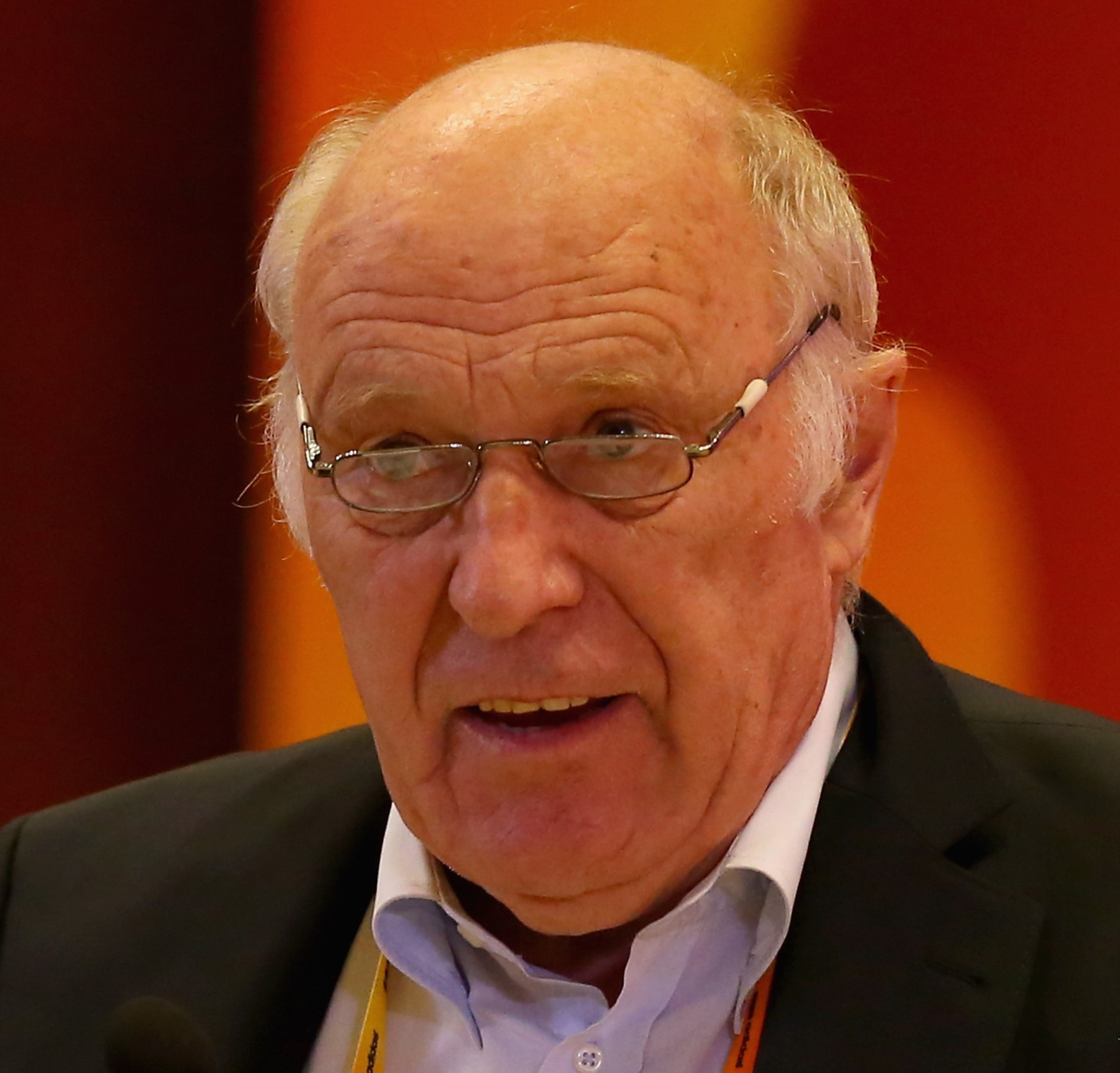
In the world of international sport, dramatic changes have been taking place for a long time, and especially in these days, which have had an impact on their performance, their effects and their scope.
It is very difficult to assess this process even by experts.
In my opinion, four of these changes are particularly consequential and require closer analysis and observation:
1. Especially in recent weeks, it has become obvious that the map of world sport and the centres of power it identifies has changed considerably.
In the past, there were only two centres of power in professional high-performance sports, namely the USA and Europe, but for some time now another centre of power has been added with China, Korea and Japan.
In the past two decades, the world map of sport and thus also its geopolitics has been radically changed once again, as the entire Arab world, but above all the Gulf states of the Arabian Peninsula, i.e. Saudi Arabia, Qatar, United Arab Emirates, Bahrain, Oman and Kuwait, have formed another centre of power, which, with all its financial resources and economic resources at its disposal, has once again radically changed and will continue to change the existing situation between the already existing powerful sporting nations.
2. When it comes to changing power structures, two processes that appear to be contrary at first glance can be identified, which can be equally dangerous for the existing structural conditions of international high-performance sport. On the one hand, there is an increasing privatisation of high-performance sports.
More and more sports clubs are becoming privately owned, private investors are buying into existing sports structures, even training centres and competition structures are being privatised.
The Austrian beverage manufacturer Red Bull or a Swiss pharmaceutical company with its high-performance sports centre OYM are just two examples among several. On the other hand, there is an increasing process of nationalisation, in which some states are making use of private-sector organisational structures in order to seriously change the balance of power in world sport in their favour.
This applies above all to the politically controlled appropriation of some Arab states, but also partly by states of the former Soviet Union and by Asian states of selected private-sector sports companies.
The so-called Non-Governmental Organisations (NGOs), i.e., the voluntary associations that have essentially supported world sport for more than 100 years, fall by the wayside.
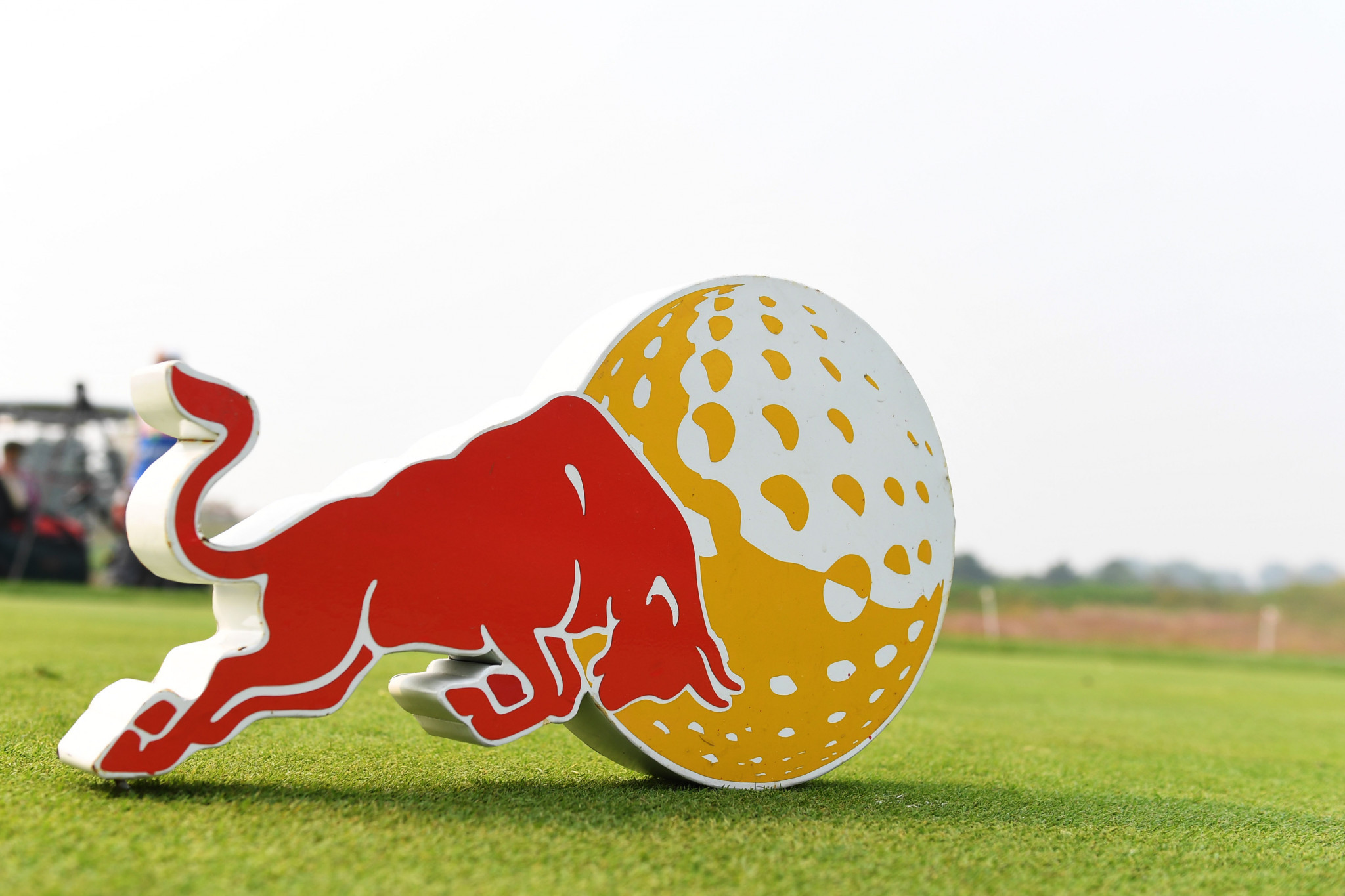
3. The two processes of change mentioned here go hand in hand with a questioning of all existing ethical and moral maxims of Olympic sport, the effects of which can hardly be overlooked.
At the same time, the boundaries of what is allowed and what is to be prohibited are constantly shifted in favour of what is feasible.
The overarching maxim "everything that is not forbidden is allowed" applies. Sport has become a field of experimentation in the natural sciences. "Enhancement" is the order of the day.
The rules of fair play have thus outlived themselves and the sport and the high-performance athlete will be subject to "KI-object", although the outcome of this experiment is completely open.
4. For some time now, it has been observed that all those countries which, from their point of view, have been disadvantaged in the development of international sport for more than a century, are justifiably demanding that world sport - operated as a high-performance sport - can and should take place at any time and any place on this earth.
The US and Europe have sought to limit the staging of major international sporting events to the North American and European continents.
They have received sustained support from the mass media which thy themselves did dominate, but this has been and is rightly condemned by many nations on other continents as "neo-colonialism" and "racism".
The assumption that the four seasons that exist in northern Europe and the USA define the calendar for international sporting events is therefore becoming more and more clearly a thing of the past.
The same applies to the assumption that international sporting events always have to align themselves with European entertainment wishes at Central European Time (CET).
A World Cup can be held today and in the future in a country like Qatar with a desert landscape and with average daily temperatures of over 30°.
In the future, however, a World Ski Championships could also take place in the same country, where the competitions will be held on artificial snow in a covered and air-conditioned artificial winter park.
Europe must learn that when it is winter in the northern half of the globe, the southern half of the world is in the summer months.
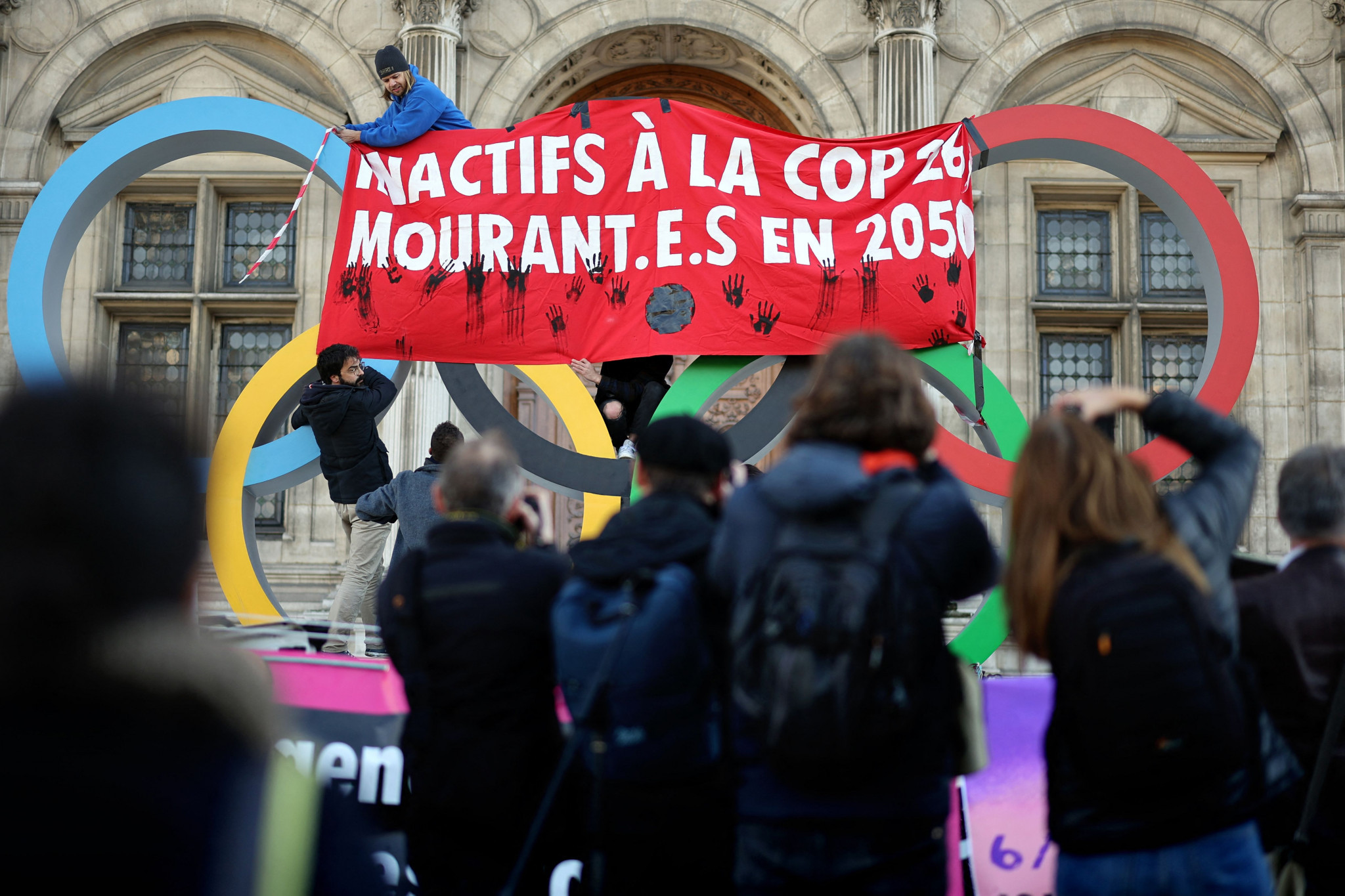
Just as it used to be expected that athletes from New Zealand, Australia and the Caribbean would compete in the indoor arena of European athletics, even though it is summer in their own countries, Europe is now expected to: that their athletes also take part in competitions all year round, regardless of the climatic conditions under which they take place.
Ecologically, this development is more than alarming. However, in view of the greed for money that has gripped the whole of world sport for a long time, environmental concerns are of secondary importance, or are they not even considered.
World sport - this is another dangerous aspect of its advancing globalisation - increases its CO2 "footprint" almost every year.
The volume of traffic is growing unabated and the total number of participants in international multi-sport events who travel to these events by plane or private transport has increased immeasurably.
In 2022 alone, there have been more than 850,000 sporting events where betting has been legal and illegal. Contrary to all reason and climatic warning signals, new international sporting events are constantly being added.
"Mutual consideration" or even "abstinence" are unknown foreign words. The CO2 emissions caused by the spectators along the streets from France and all over Europe who have travelled by the entourage of the organisers reporting on the Tour de France and the mass media can show in an exemplary way how such large-scale events are questionable against the backdrop of climate change, which is being lamented by all sides.
In addition, each of these major sporting events, which usually last several weeks, requires an enormous amount of preparation and follow-up, which also requires a considerable amount of flight.
In my opinion, world sport with its climate-damaging effects should therefore have long since been publicly pilloried and any further growth, i.e., any new event, should be banned.
However, whether those responsible in the world sports organisations are learning that "less can also be more" in view of the climate crisis seems highly questionable in view of their greed for money.
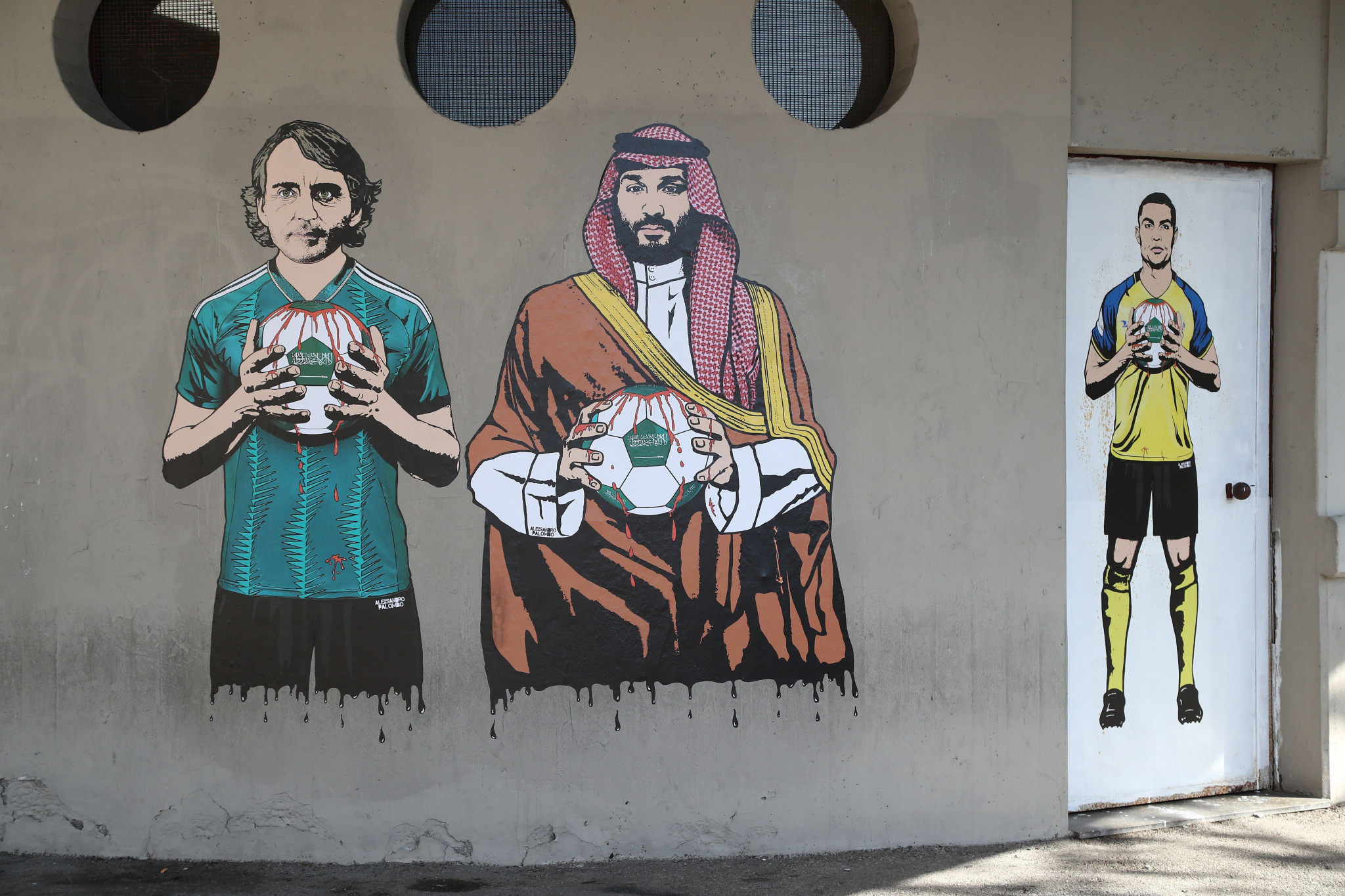
The strange and simultaneous mixing between nationalisation and "pseudo-privatisation" that can be observed these days, as it is being promoted above all by the Gulf States, seems to me to be particularly influential and dangerous.
The state takeover of world sport is camouflaged by upstream companies and funds and pseudo-private companies, in which, however, either the "royal family" in Saudi Arabia or the ruling "emir family" of the respective emirate have the "say".
Qatar was the first country in the Persian Gulf to successfully find its way into world sport. It invested in tennis, Formula 1, in the International Handball Federation, athletics, Asian Games and World Championships in almost every Olympic sport. In 2014, it began with the World Championships in swimming, followed by boxing and handball in 2015, cycling in 2016, and artistic gymnastics and athletics in 2018 and 2019. The highlight was the 2022 FIFA World Cup. This was Qatar's greatest success in world sport, as this country is now involved in almost all major sports in the world.
Almost all Arab states followed this path and so today the Tour de France is dominated by two teams from the Gulf region and the series of sports whose responsible sports officials have offered their competitions for sale to the rulers from the Gulf states is getting longer and longer.
What is most striking these days is the role of Saudi Arabia, which is currently overtaking its once reviled neighbour Qatar with a unique catch-up programme and is deliberately flaunting its claim to a leading role in world sport. They do this even in regions of the world that are not at all happy about it.
In addition, Saudi Arabia is now even cooperating with its former arch-enemies Iran and Qatar on issues of world sport. Karim Benzema and Cristiano Ronaldo now play in the Saudi football league and another 20 "soccer-world stars" too. It is a league of legionnaires in which one in five is a Brazilian.
Saudi Arabia has set up its own golf tour, the so-called LIV Golf. The name corresponds to the number 54 in the Roman script and refers to three rounds of golf à 18 holes.
In this way, the company differentiated itself from the American PGA Tour, which was now integrated into its own "license rights portfolio" and could be bought from the US American owners for a higher amount.
In addition to the acquisition of the rights to the Rallye Dakar, it now organises Formula 1 races annually, will host the first Asian Winter Games in 2029, and was the first to host Formula E races.
Already in 2013 and 2019, a Spanish and English football club was acquired. For both countries the Arabs will also host their Super Cup. Aston Martin, the Formula 1 racing team, is owned by Saudi Arabia as well as WWE wrestling.
The world market leader ESL Gaming in e-sports is controlled and financed by Saudi Arabia. The desert state has spent $1 billion on this company. The vehicle is the "Savvy Gaming Group", a 100 percent subsidiary of the sovereign wealth fund Public Investment Fund (PIF). This fund is chaired by Crown Prince Mohammed bin Salman Al Saud.
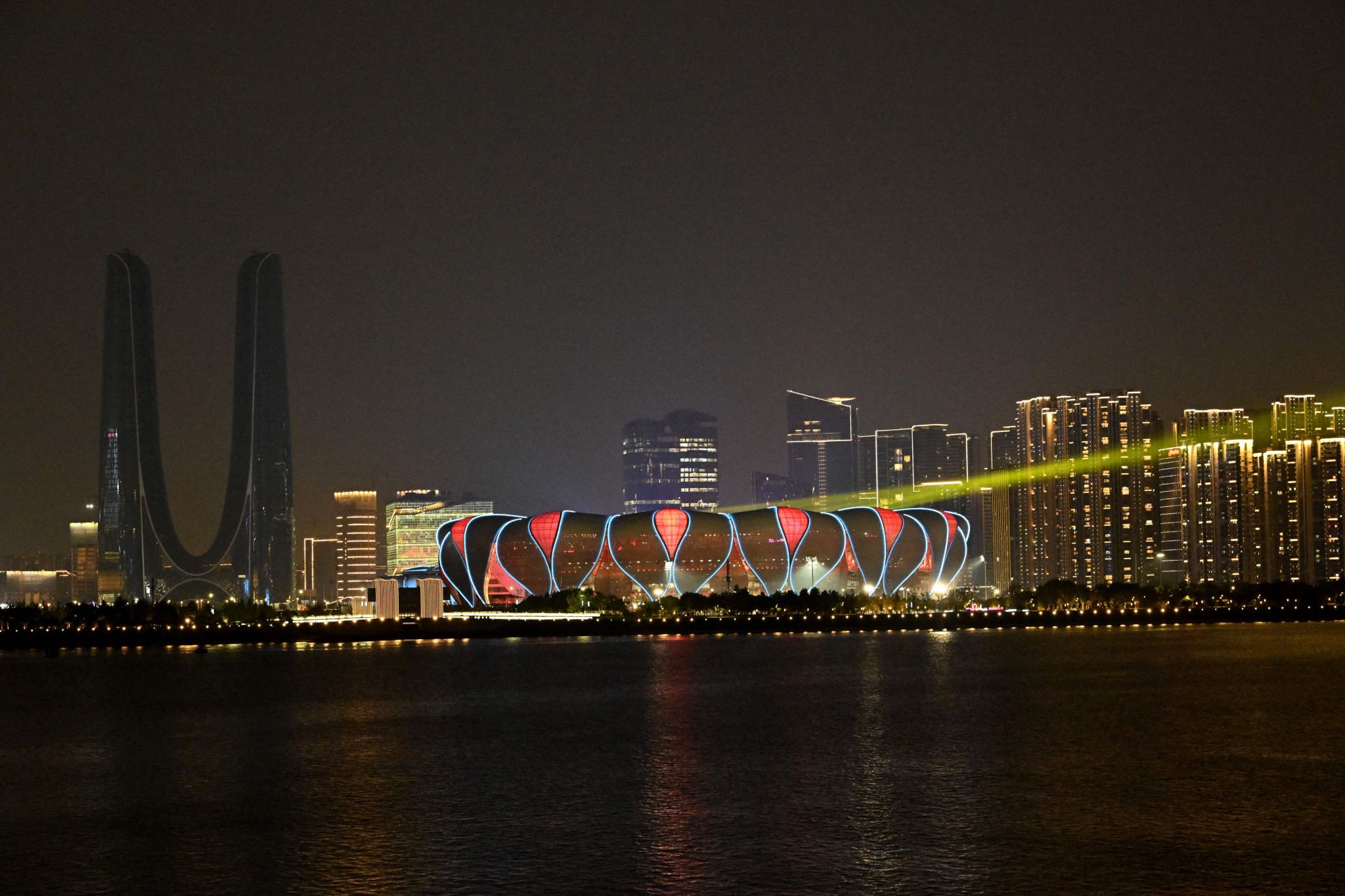
The United Arab Emirates is no less active. They have now acquired eleven football clubs in England, USA, Australia, Uruguay, France, India, Italy, China, and Brazil. For this purpose, a "City Football Group" was established. There are also plans to enter the American basketball league NBA after it abandoned its former strategy policy and signaled to the Gulf states that it could acquire shares.
Dubai is the venue for the world's most lucrative horse race and the world championship in horse racing every year. At the Meydan race-course, which surpasses everything in architecture with its many facilities, the best horses in the world start. At the same time all the international "horse dealers" who have rank and name have their most important annual meeting.
All this is possible because the governing bodies of the key organisations of world sport are dominated by officials who are driven by an excessive greed for money and whose intellectual competence is totally inadequate to recognise the dangerous developments that are thus affecting the existing structures of the whole of world sport. And thus ultimately saw off the chair on which they themselves sit with their irresponsible actions.
The Gulf states, especially Saudi Arabia, play the same role in the field of sport that they have previously played in various sectors of the economy. They act as "stone-rich" investors who are generous and sometimes even help when other means that have been exhausted.
In the economic sports model, which was largely influenced by the USA, it was common for investments in sports clubs to be made with the aim of skimming off profits through annual income and sponsorship.
In the Arab sports model, the sports industry detaches itself from all financial consequences. It's not about profits and losses. First and foremost, it is a matter of ensuring that the Gulf states achieve their desired place on the important political map of this world through sports investments.
"Sport has become" - as Felix Haselsteiner rightly points out in his economic analysis in the SZ of 8 July 2023 - "a vehicle in a great construct".
For Saudi Arabia, this means being recognized as a world power among the leading world powers.
"Saudi Arabia is deliberately abolishing competition here, not only economically but also in terms of sport."
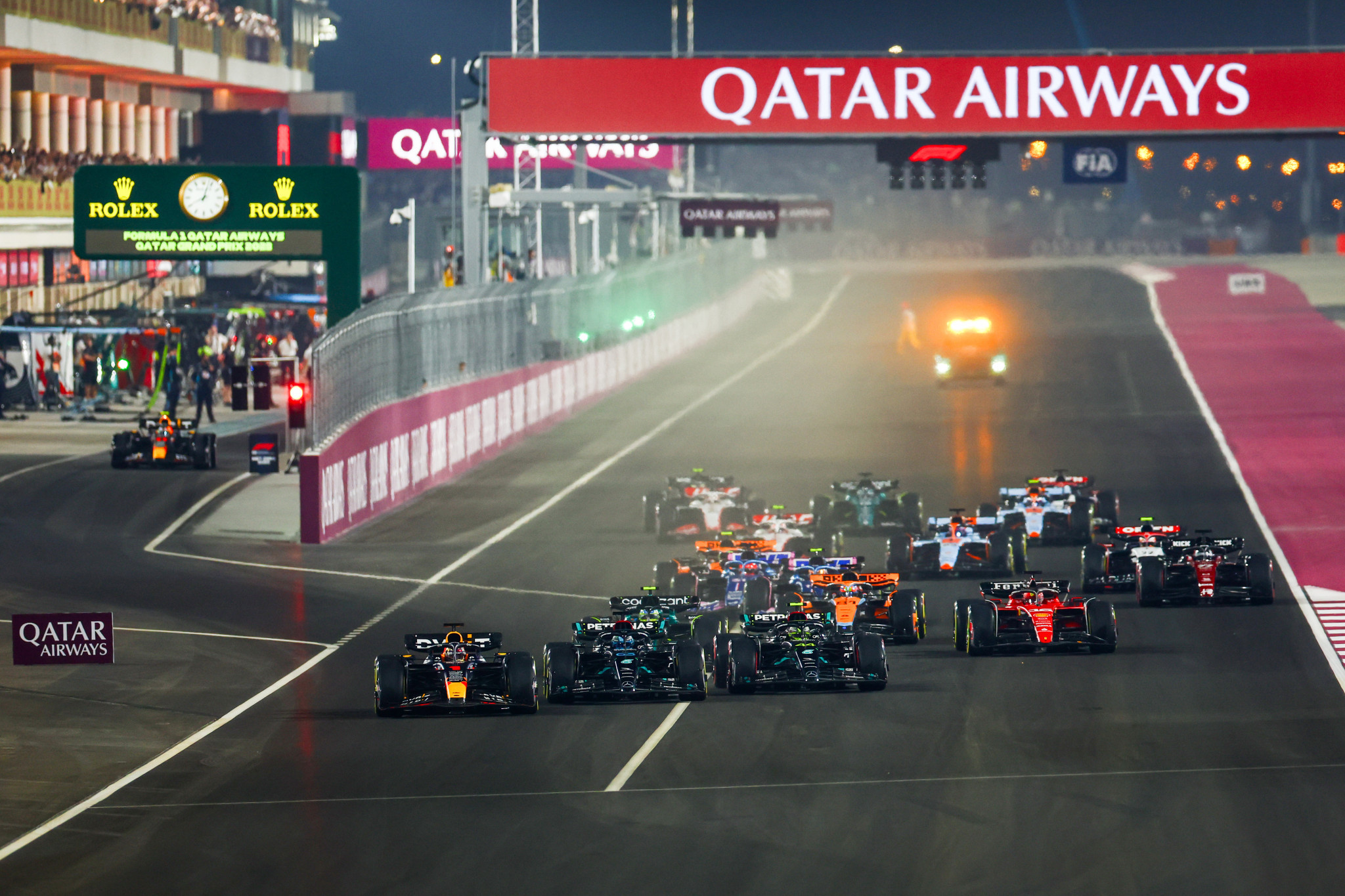
This applies equally to the salaries of the Saudi-Arabian football league and all other leagues in the Gulf states as well as to the prize money and bonuses paid in the various sports. So even the last golf pro at an LIV Golf event still receives thousands of US dollars in prize money.
None of the many international sports organisations has spoken out against this development, or even tried to hinder it.
It must now be painfully understood that all those who greedily brought the money into their sport have always given up their power.
It was the major federations of world sport such as FIFA, the International Handball Federation (IHF), World Athletics, the International Cycling Union (UCI) etc. who invited the Gulf states to buy up everything possible from the world of sport that was up for sale.
Presumably, they would not have been able to exclude investors on the basis of existing laws, but they could at least have slowed down the increasingly rapid development processes by protecting the core of their sports through new regulatory structures.
Today, due to the changes that the Gulf States have brought about in the world of sport, it is necessary to speak of a "story of the end of sport".
But analyst Haselsteiner also sees a small glimmer of hope: "It's pure fatalism, but the only way that sport will ever become just sport again would possibly be the crash of the system. Football clubs are not big banks and a sport is not 'too big to fail'. You won't bail out sports clubs with billions of taxpayers' money if something goes wrong at some point, which also means that there is still hope."
In relation to the ethical and moral decline of world sport indicated above, however, less hope seems to be appropriate.
The global process of "totalisation of high-performance sports" is advancing faster and faster. The announcement that next year the so called "Enhanced Games" are to take place is just one symptom among many.
The time-results and speeds achieved at the Tour de France and some more cycling races indicate that the training science, medical, pharmaceutical and biomechanical interventions in high-performance sports, that the "higher, faster, further" maxims are limitless, at least from the point of view of most of the protagonists of the social system of "high-performance sport".
Even three tragic deaths caused by falls in professional cycling in recent season are unlikely to change anything. There have been several similar warning signs in recent years. But those responsible for such major sporting events always immediately moved on to planning the next major event if they could be sure that the short-term mass media rebellion would quickly come to a standstill again.
You can be sure that your sporting entertainment event, as a "spectacle" and "excess", will continue to be visited by spectators in the future.
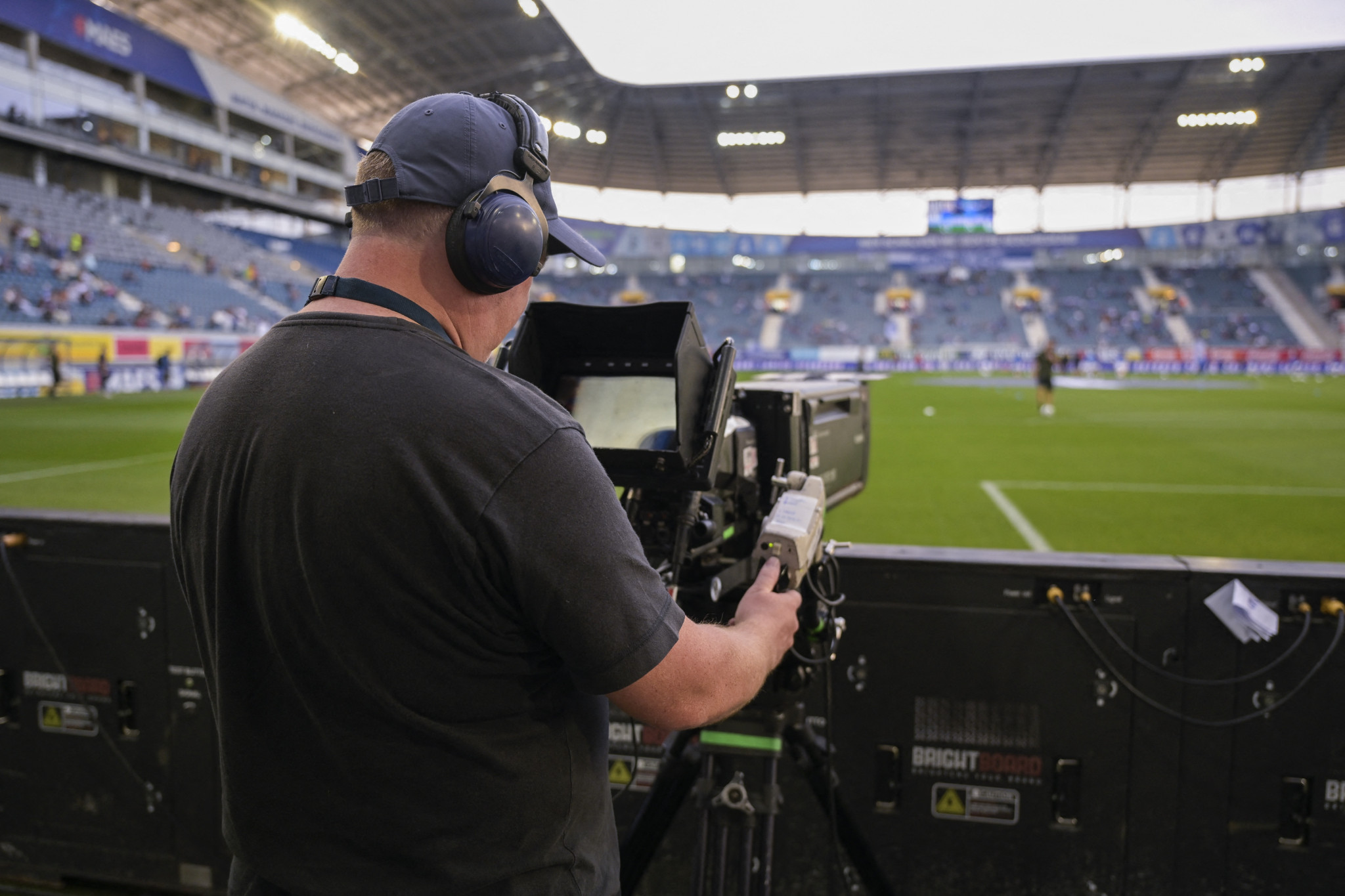
But if there were a consensus on the ethically and morally desirable values that should characterise high-performance sport, these dangers would at least be to master and manageable.
However, all stakeholders - athletes, coaches, sports- officials, scientists, organizers, sponsors, sports journalists, politicians, etc. - are further away than ever from this consensus.
Additional to this, for the third danger described above, for a high-performance sport that has to seek its future under the looming climate change, there are virtually no insightful findings on how sport could deal with it.
The general warming will call into question all events of international sport that are intended as open-air events in the medium and long term.
Winter sports, as a sport practiced in natural snow, have been showing signs of decline and decay for a long time and continue to do so today.
The staging of the Winter Olympics is substantially endangered to an extent that is not yet entirely clear.
Due to surprising climate catastrophes, extreme precipitation, floods, water shortages, energy shortages, famines, prolonged droughts, changes in vegetation, etc. not only can individual sporting events be endangered, but entire sports will also lose their meaningfulness and thus their attractiveness.
Some of them are far too expensive to carry out and may have to be restricted by Government bans because they increase the already very dangerous effects of climate change on the daily lives of human societies.
The changes outlined in this essay, which I believe are dangerously affecting world sport these days, are threatening in many respects.
They are a danger to athletes because they are increasingly becoming the plaything of interests whose observance they cannot influence.
The marginal utility of athletic performance for athletes is becoming less and less and the risk of long-term damage from the exercise of peak athletic performance is continuously increasing.
But the changes are also threatening to our society.
A sport that not only loses control of itself in its greed for money, but also becomes a threat to the environment with its growth ideology, means a social danger.
This danger can certainly be exacerbated considerably in the face of climate change that is already observable.
Finally, however, these changes are also extremely threatening for a desirable sports culture, as they also indirectly affect "sport for all", school sports, club sports and all other informal forms of sport.
The appeal to reason and responsibility of the officials in the organisations of sport associated with this essay is intended, but unfortunately it cannot be expected that it will be heard and heard.

